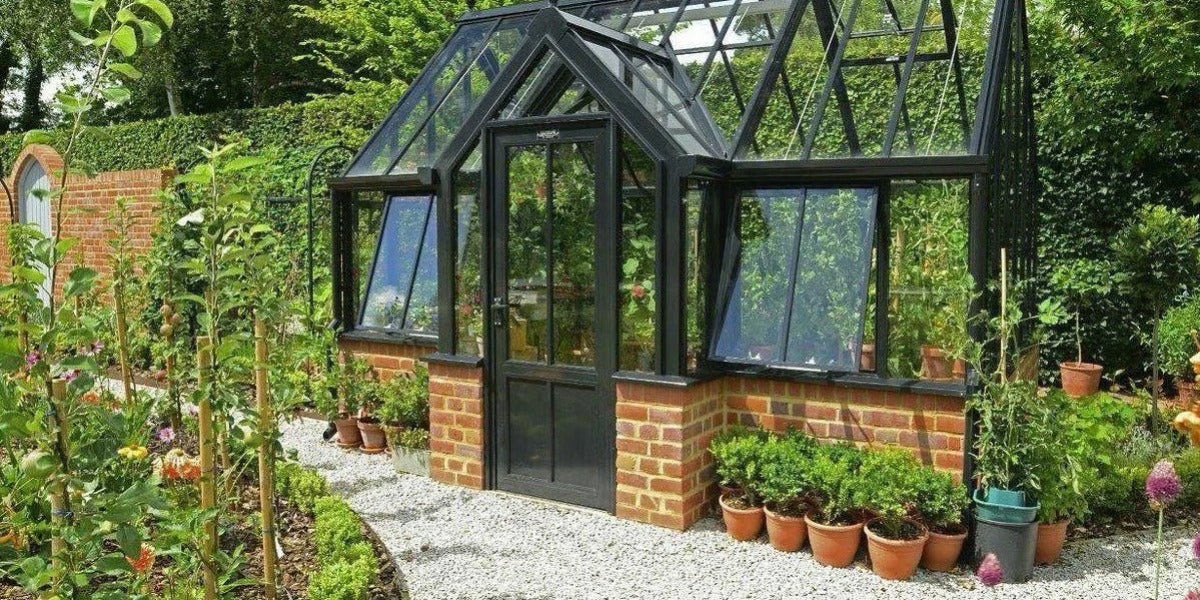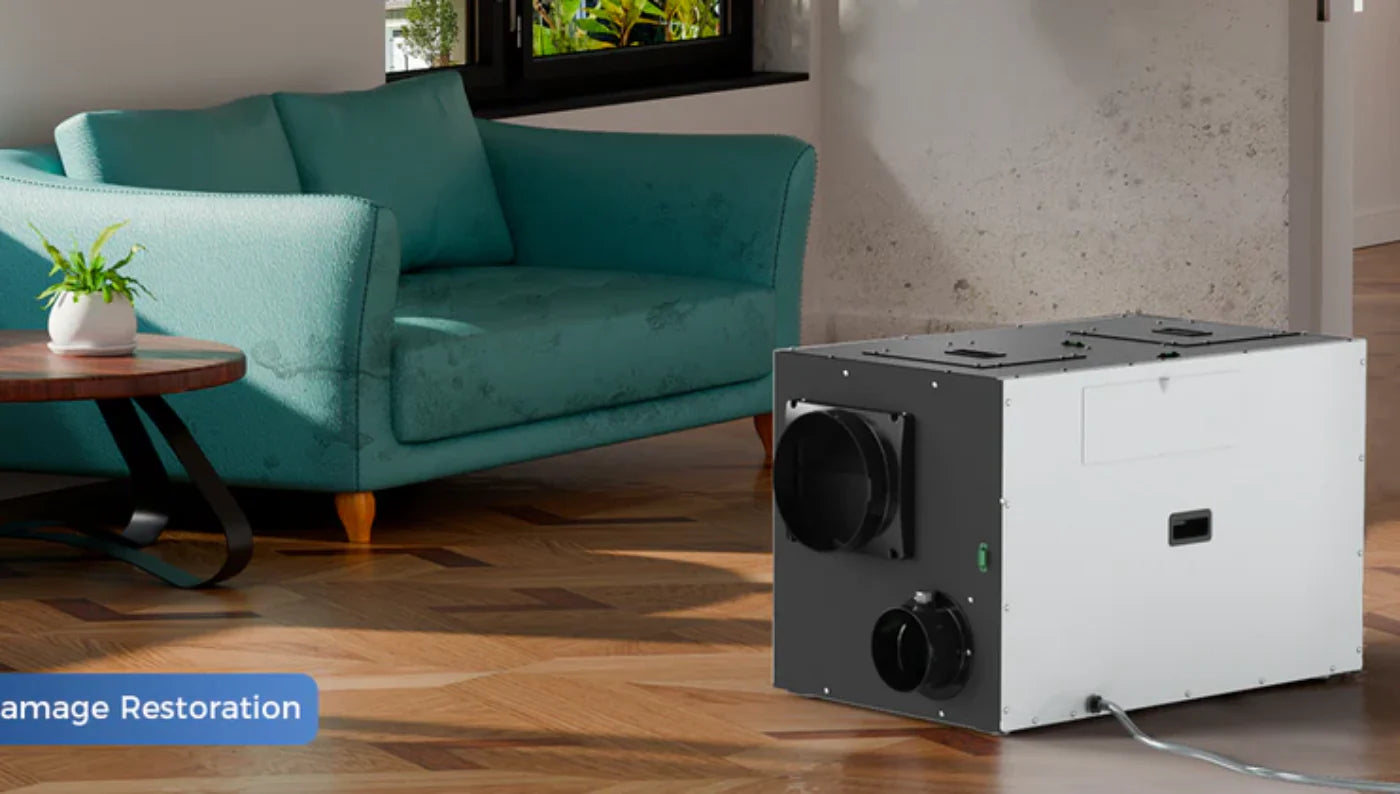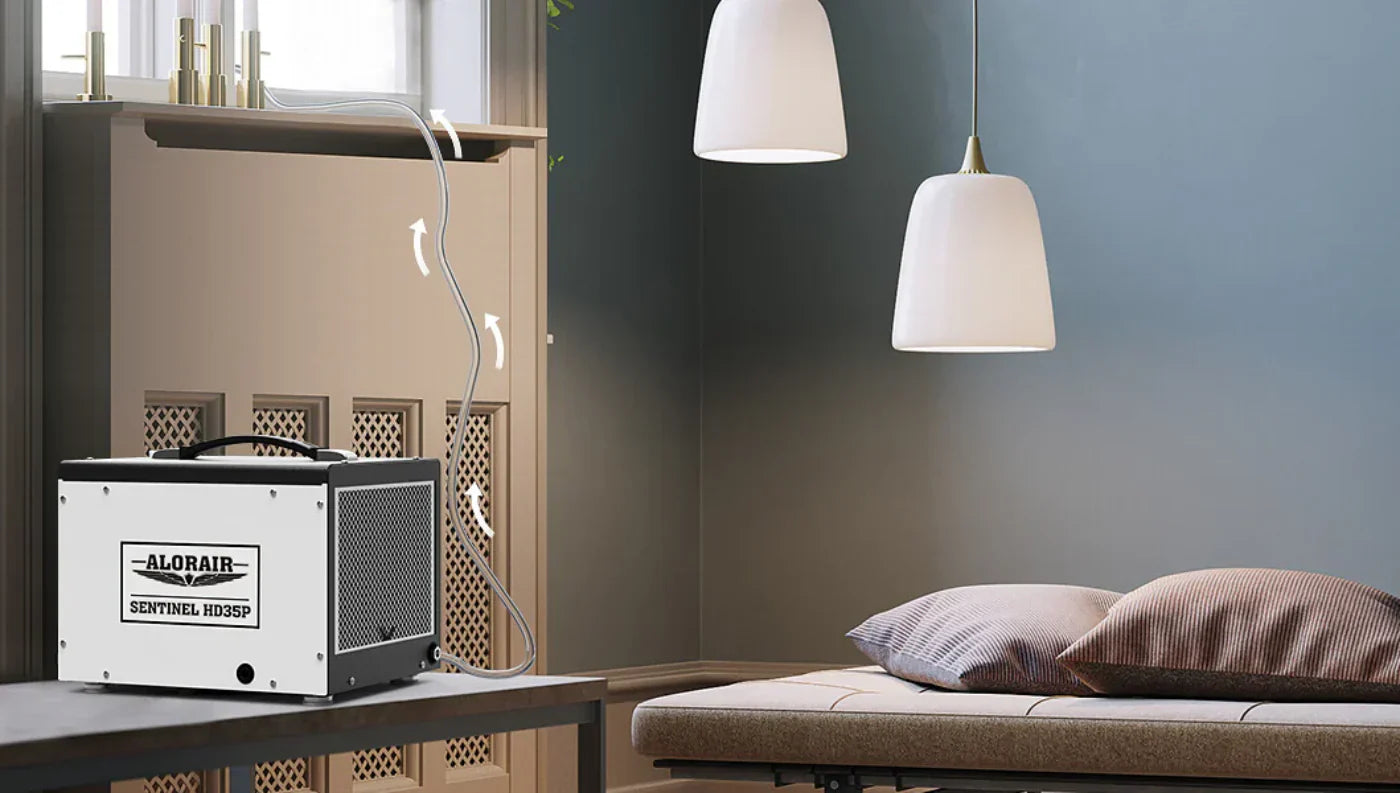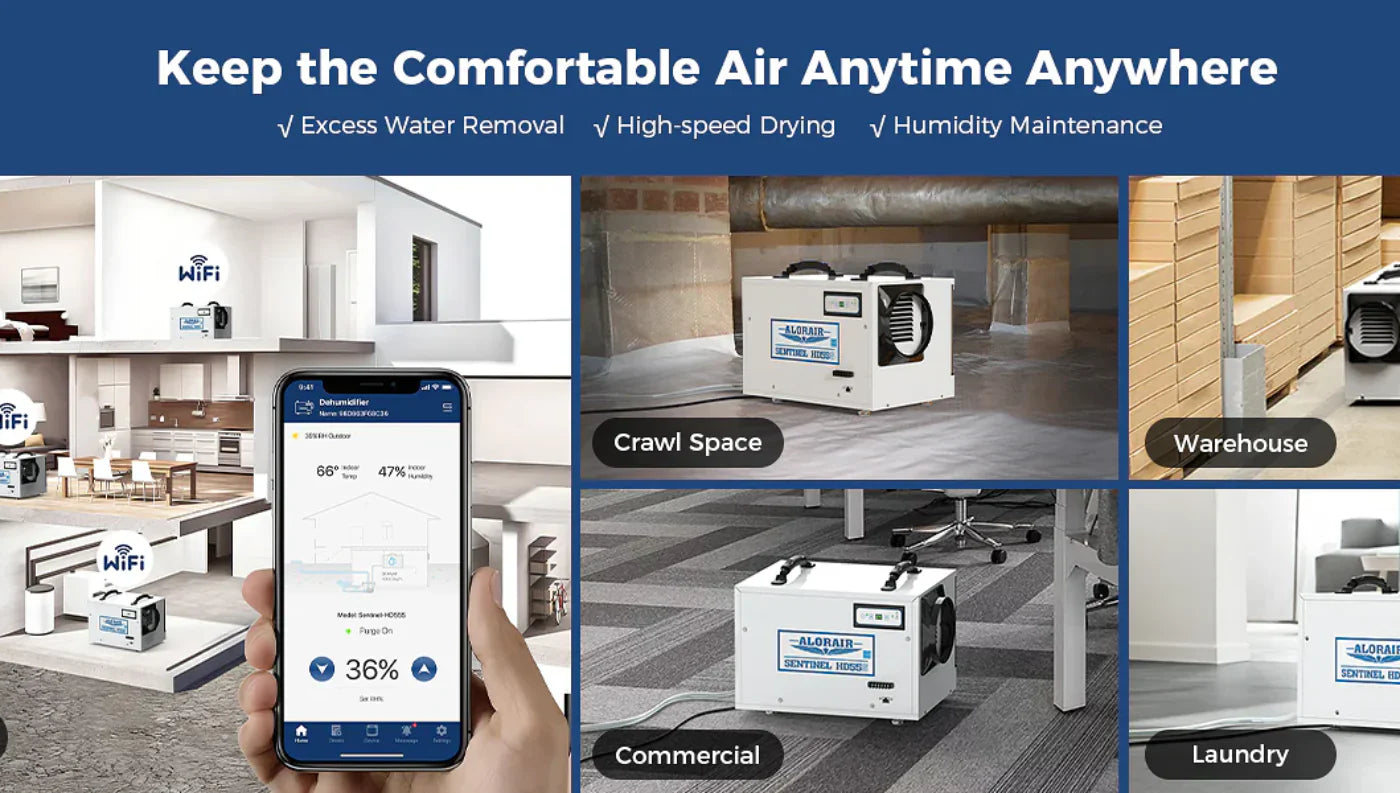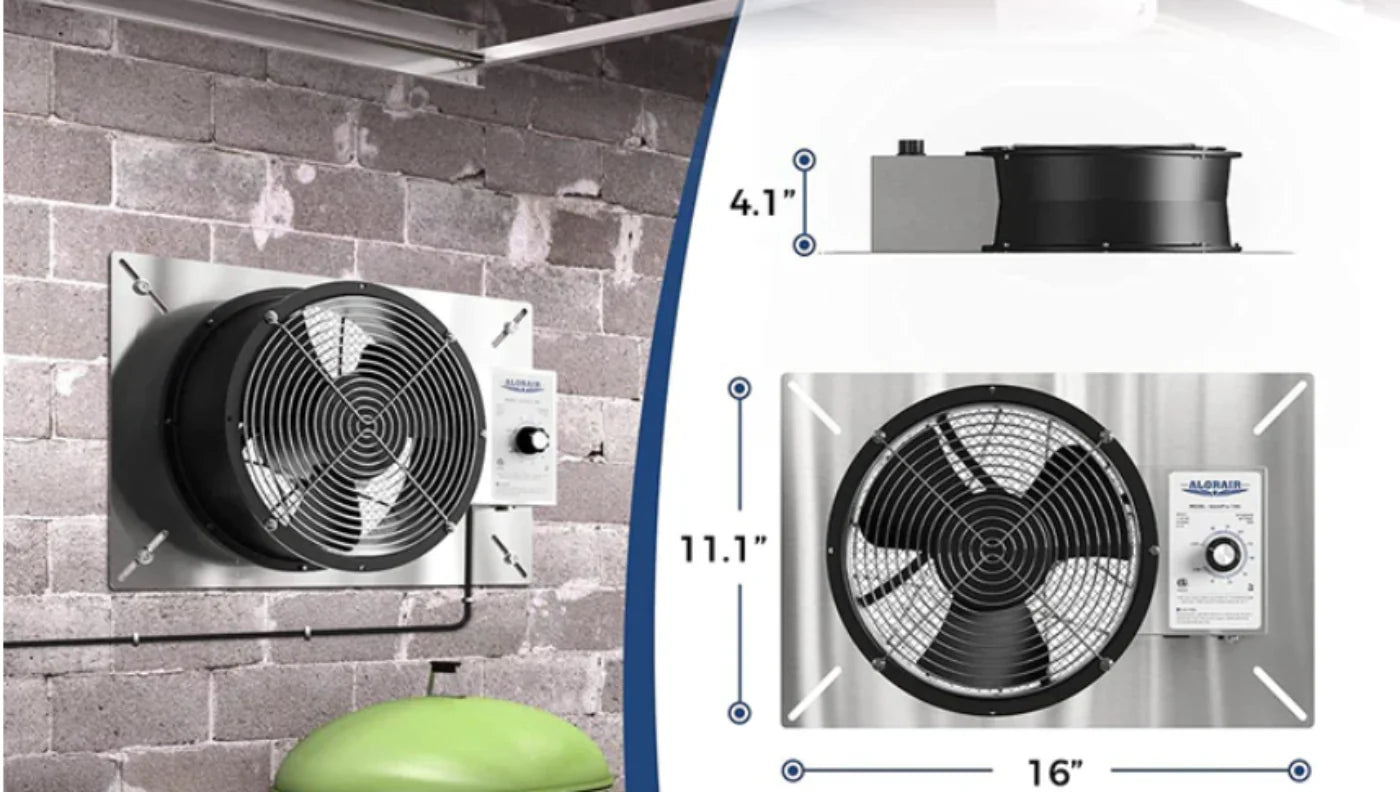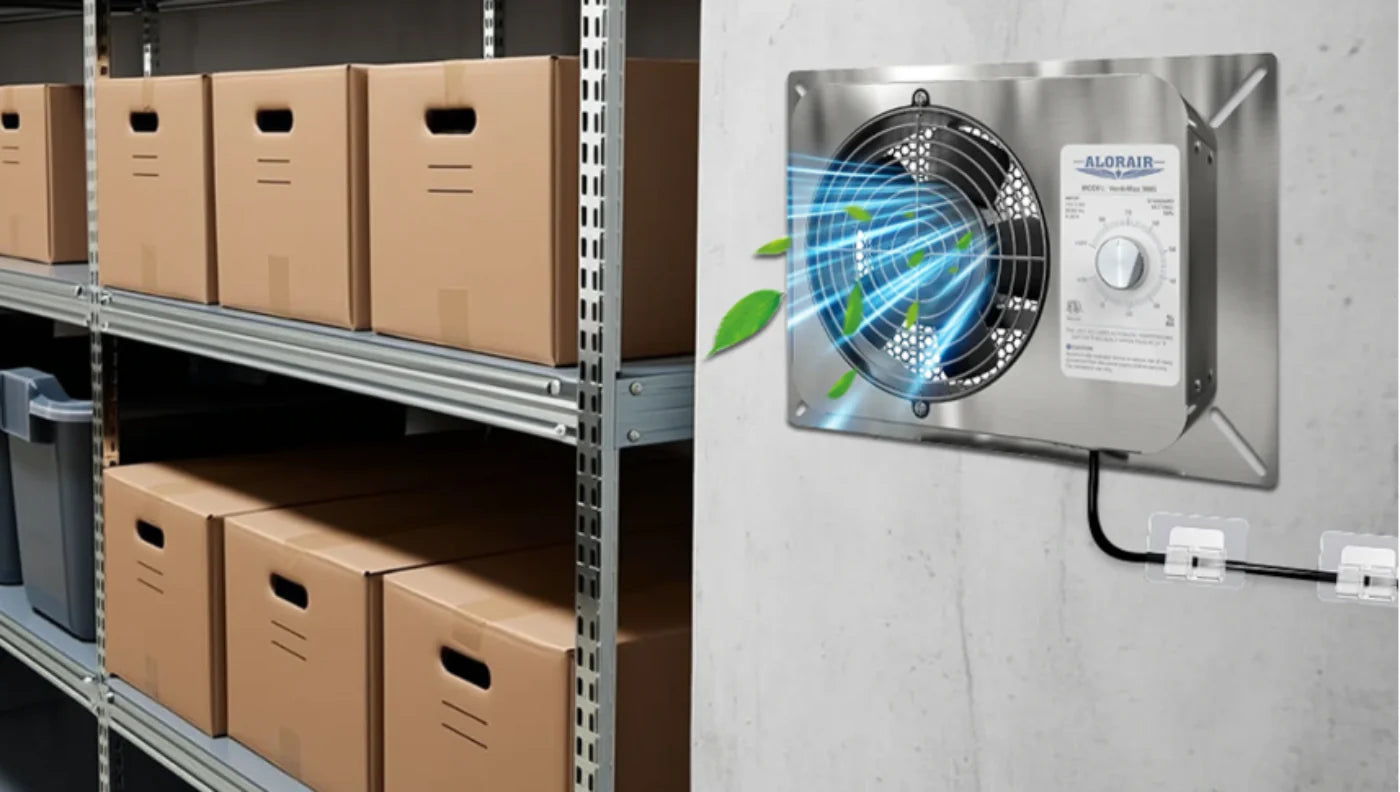Greenhouse dehumidifier is an eco-friendly technology for maintaining optimal humidity in your greenhouse plantations, which is crucial for the health and development of plants. Therefore, one effective way to control humidity is by using a dehumidifier. But, what dehumidifier should you put in your greenhouse?
Whether you're growing in a partially or fully enclosed greenhouse, or even just growing indoors, a dehumidifier is an essential tool for optimizing your growing conditions, cutting expenses, and maximizing your harvest. It could be scary to buy new tools though. Because of this, we have compiled a list of the most important things to look for in a dehumidifier for a greenhouse.
What percentage of Greenhouse relative humidity is best?
Although it varies from plant to plant, most plants thrive in a greenhouse with a relative humidity of around 80% and a temperature of 80°F (27°C). Most greenhouse plants thrive and produce their most at a humidity level of 80%. Because they are unable to absorb the appropriate quantities of water and nutrients, plants experience slower growth rates and reduced yields when subjected to extremes of humidity.
Be mindful, though, that many tropical plants thrive in more humid conditions, while others, like succulents and cacti, require drier conditions. Because their leaves can store more water, plants with bigger leaves can usually survive in reduced humidity. If you want to grow certain plants, you should research their specific humidity needs.
Lastly, remember that humidity is influenced by temperature. Humidity drops as a result of increased evaporation caused by warmer weather. When temperatures are low, the inverse is true. For the same reason, you should keep your greenhouse at a consistent temperature, preferably between 64 and 75 degrees Fahrenheit (18 and 24 degrees Celsius).
Is a Greenhouse Dehumidifier Necessary?
Yes! A greenhouse dehumidifier is necessary, as it helps prevent mould, mildew, and pests that thrive in high humidity. It ensures your plants receive the right amount of moisture without the negative effects of excess humidity. Secondly, reducing relative humidity is the primary function of dehumidifiers. To keep the relative humidity below the dew point, dehumidifiers draw moisture out of the air. This ensures that atmospheric water vapour will never be mistaken for a liquid water.Reducing moisture level is important for various reasons. Diseases like downy mildew and botrytis emerge as a result of water condensation in a greenhouse. No amount of spores can bring these mushrooms to life if water never condenses.
Lastly, many plant species have distinct ideal ranges of relative humidity, similar to how they do with radiation and temperature. Moderate humidity is likely to benefit your crops, allowing them to grow faster, larger, and of higher quality—unless you're a fruit grower in the tropics.
Benefits of Dehumidifier for Greenhouse
Dehumidifier in greenhouse play a vital role in maintaining an optimal environment. By controlling the humidity levels, greenhouse dehumidifiers create a favourable atmosphere for plant growth, ultimately leading to improved plant health and higher yields. Read on to explore the various benefits of using a dehumidifier in a greenhouse and how it contributes to creating an ideal growing environment for plants.
Improvements in Energy Efficiency
To function at its best, an agricultural dehumidifier requires a greenhouse environment. Consequently, for a dehumidifier to work at its best, the ideal conditions include a temperature between 18 and 24 degrees Celsius and a relative humidity of about 80%.
The use of energy should be your next consideration. Minimising inputs is a goal of modern agriculture. Farmers may be required by law to follow specific procedures. The total cost of growing and the environmental impact can be mitigated with the help of any new equipment that is brought into a growing area.
Improved Control of Temperature
Temperature regulation is the bedrock of indoor gardening. Keep the broader view in mind while you search for methods to control humidity.
You can fine-tune the temperature in your grow room with the help of a high-quality dehumidifier. Your dehumidifier needs to be able to adapt to changing temperatures. Since heating is usually required, it must be capable of increasing heating efforts. On hot summer days, you could find yourself expending energy to attempt to keep things cool, so it shouldn't get too hot.
Enhance Air Distribution
Using a dehumidifier in a greenhouse can enhance air distribution despite its use, the term "air circulation" is not often defined precisely when discussing greenhouse gardening. Also, in a confined growth environment, the airflow pattern is crucial. Keeping everything in its proper place is something we work very hard at. These endeavours can prove fruitless if the air circulation is not uniform across the entire area.
Dehumidifiers are already capable of handling air, as indicated earlier. Therefore, the ideal growing environment should be disseminated to every area of the room using an efficient dehumidifier. If done incorrectly, diseases associated with high humidity will persist in the damper regions and spread to other plants. Because they are still exposed to less-than-ideal conditions, the crops in these areas will fail to meet expectations as well.
Factors to Consider When Choosing a Dehumidifier in Greenhouse
You must not get it wrong when choosing the best optimal environment for plant growth. Your decision begins from choosing the best dehumidifier in greenhouse, which can help regulate moisture levels, but knowing the right brand involves considering the following factors. From the size of the greenhouse to the specific needs of the plants, selecting the appropriate dehumidifier for greenhouse operations requires careful consideration.
Size of Your Greenhouse: The size of your greenhouse determines the capacity of the dehumidifier you need. Measure the square footage of your greenhouse to choose a dehumidifier that can handle the space efficiently.
Dehumidifier Capacity: Dehumidifiers come with different capacities, measured in pints per day (ppd). For a small greenhouse, a dehumidifier with a lower ppd will suffice. Larger greenhouses require higher capacity dehumidifiers to manage the humidity effectively.
Energy Efficiency: Energy efficiency is another important factor. Look for dehumidifiers with Energy Star ratings. They consume less power and save on electricity bills while maintaining optimal humidity levels.
Ease of Maintenance: Maintaining your dehumidifier is crucial for its longevity and performance. Opt for models that are easy to clean and have accessible parts. Learn how to clean a dehumidifier coil and how to clean the filter in your dehumidifier to keep it running smoothly.
Installation Tips for Greenhouse Dehumidifiers
If you're looking to maintain the optimal humidity levels in your greenhouse, whether you're a seasoned greenhouse enthusiast or just starting, a reliable dehumidifier for your greenhouse can work wonders in creating a healthy environment for your plants only when they are strategically installed. Below are tips for installing your greenhouse dehumidifiers for maximum efficiency and effectiveness.
Proper Placement: Place your dehumidifier in a central location for optimal performance. Ensure there’s enough space around it for air to circulate.
Regular Maintenance: Regularly clean the filter and coils of your dehumidifier. This prevents clogs and ensures efficient operation. Knowing how to clean a dehumidifier coil and how to clean the filter in your dehumidifier is essential for maintenance.
Monitor Humidity Levels: Use a hygrometer to monitor the humidity levels in your greenhouse. Adjust the settings on your dehumidifier as needed to maintain the desired humidity range.
Tips To Clean Your Dehumidifier Coil
To maintain the efficiency of your greenhouse dehumidifier, it's important to clean the coil and the filter regularly. Cleaning your greenhouse dehumidifier coil by:
1. Turn off the dehumidifier and unplug it from the power source.
2. Locating the access panel that covers the dehumidifier's coil.
3. Use a soft brush or vacuum with a brush attachment to gently remove any dust or debris from the coil. Be cautious not to bend the delicate fins of the coil.
4. If there is stubborn dirt or debris, you can use a mild detergent and water solution to carefully clean the coil. Dip a soft cloth in the solution, wring out excess water, and gently wipe the coil. Avoid using harsh chemicals or abrasive materials that could damage the coil.
5. Allow the coil to dry completely before reassembling the dehumidifier and plugging it back in.
Also, you can clean the Dehumidifier Filter by :
1. Refer to the user manual to locate the filter in your dehumidifier.
2. Remove the filter from the dehumidifier following the manufacturer's instructions.
3. If the filter is washable, you can rinse it with water or use a mild detergent to clean off any accumulated dirt or dust. Make sure to thoroughly rinse and dry the filter before reinstalling it.
4. If the filter is not washable, use a vacuum cleaner with a brush attachment to gently remove the dirt and debris. Some filters may need to be replaced if they are not washable or if they are damaged.
Regular cleaning of the dehumidifier coil and filter will ensure that the dehumidifier continues to operate effectively, maintaining optimal humidity levels in your greenhouse environment.
Choosing the right dehumidifier for a greenhouse involves considering the size of your space, the capacity of the dehumidifier, and its energy efficiency. Proper installation and regular maintenance are key to ensuring your dehumidifier runs effectively. By selecting the best dehumidifier for your greenhouse, you can create an optimal environment for your plants to thrive.
Bottom Line
Are you in need of a reliable dehumidifier for your greenhouse? Look no further than a crawl space dehumidifier from AlorairCrawlspace. Their dehumidifiers are designed to effectively control humidity in enclosed spaces, making them perfect for greenhouse environments.
Visit Aloraircrawlspace.com to explore our range of dehumidifiers and find the perfect solution for your greenhouse needs. Don't let excess humidity compromise your plant's standard - invest in a high-quality greenhouse dehumidifier today!


